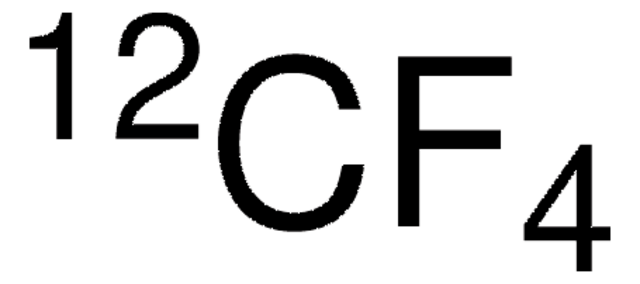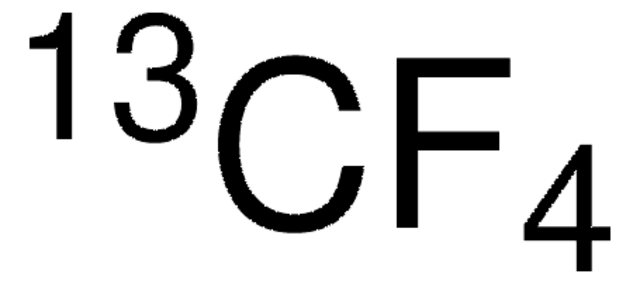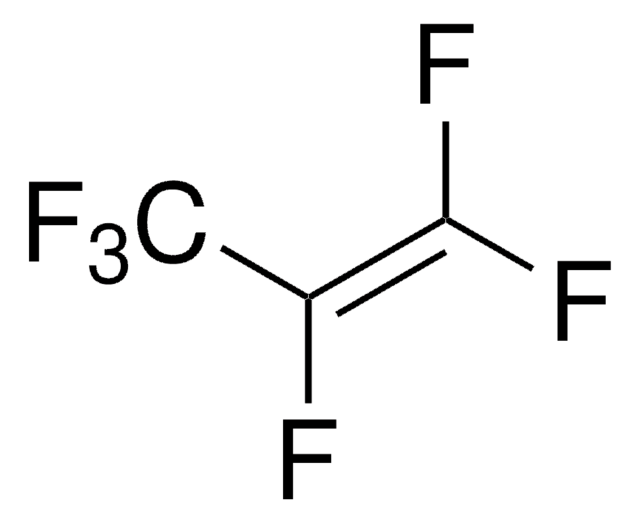295736
Carbon tetrafluoride
99.9%
About This Item
Produits recommandés
Densité de vapeur
3.04 (vs air)
Essai
99.9%
pb
−130 °C (lit.)
Pf
−184 °C (lit.)
Chaîne SMILES
FC(F)(F)F
InChI
1S/CF4/c2-1(3,4)5
Clé InChI
TXEYQDLBPFQVAA-UHFFFAOYSA-N
Description générale
Application
Conditionnement
Compatible with the following:
- Aldrich® lecture-bottle station systems
- Aldrich® lecture-bottle gas regulators
Autres remarques
Informations légales
En option
Raccord cannelé
Régulateur
Souvent commandé avec ce produit
Vanne de purge
Vanne de régulation
Mention d'avertissement
Warning
Mentions de danger
Conseils de prudence
Classification des risques
Press. Gas Liquefied gas
Code de la classe de stockage
2A - Gases
Classe de danger pour l'eau (WGK)
WGK 3
Point d'éclair (°F)
Not applicable
Point d'éclair (°C)
Not applicable
Équipement de protection individuelle
Eyeshields, Gloves, multi-purpose combination respirator cartridge (US)
Faites votre choix parmi les versions les plus récentes :
Déjà en possession de ce produit ?
Retrouvez la documentation relative aux produits que vous avez récemment achetés dans la Bibliothèque de documents.
Active Filters
Notre équipe de scientifiques dispose d'une expérience dans tous les secteurs de la recherche, notamment en sciences de la vie, science des matériaux, synthèse chimique, chromatographie, analyse et dans de nombreux autres domaines..
Contacter notre Service technique









